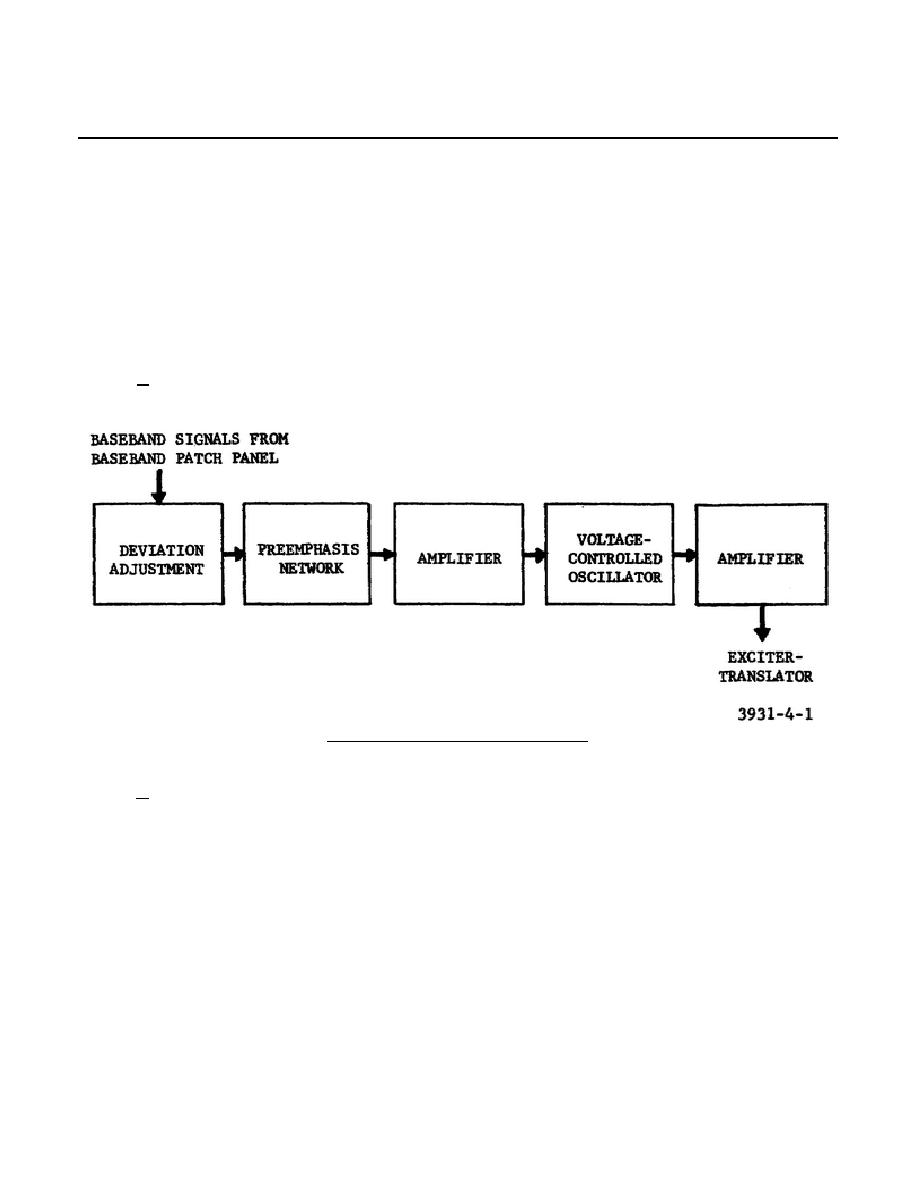
TRANSMITTING SYSTEM ANALYSIS
Section I. MODULATOR ANALYSIS
3-1. PURPOSE
The primary purpose of the modulator is to convert a baseband input from the terminal equipment to an
angle-modulated signal. Angle modulation is a modulation category that includes both frequency modulation and
phase modulation. The baseband input usually consists of frequency-division-multiplexed signals from the
tt/voice multiplexing equipment.
3-2. MODULATOR STAGES
a. A typical modulator unit will contain various shaping circuits and amplifiers, as well as the actual
modulating circuit. A block diagram of a simplified modulator unit is represented in figure 105.
Figure 105. Simplified modulator unit.
b. The normal baseband input is coupled from the baseband patch panel to a series of circuits which
prepare the baseband signals for modulation.
(1) Deviation adjustments are used to establish the desired amplitude of the baseband signals and,
since signal amplitudes are converted to frequency deviations during modulation, the adjustments
also determine the frequency deviations of the modulated signals.
(2) A preemphasis network emphasizes the high-frequency components by reducing the
amplitude of the low-frequency components of the baseband signal by a greater
amount than that of the higher frequencies.
This unbalance in the overall signal
causes the signal power level in the receiver (after demodulation and filtering)
to be increasingly large at the higher frequencies, thus compensating for the
344 L3
106



 Previous Page
Previous Page
